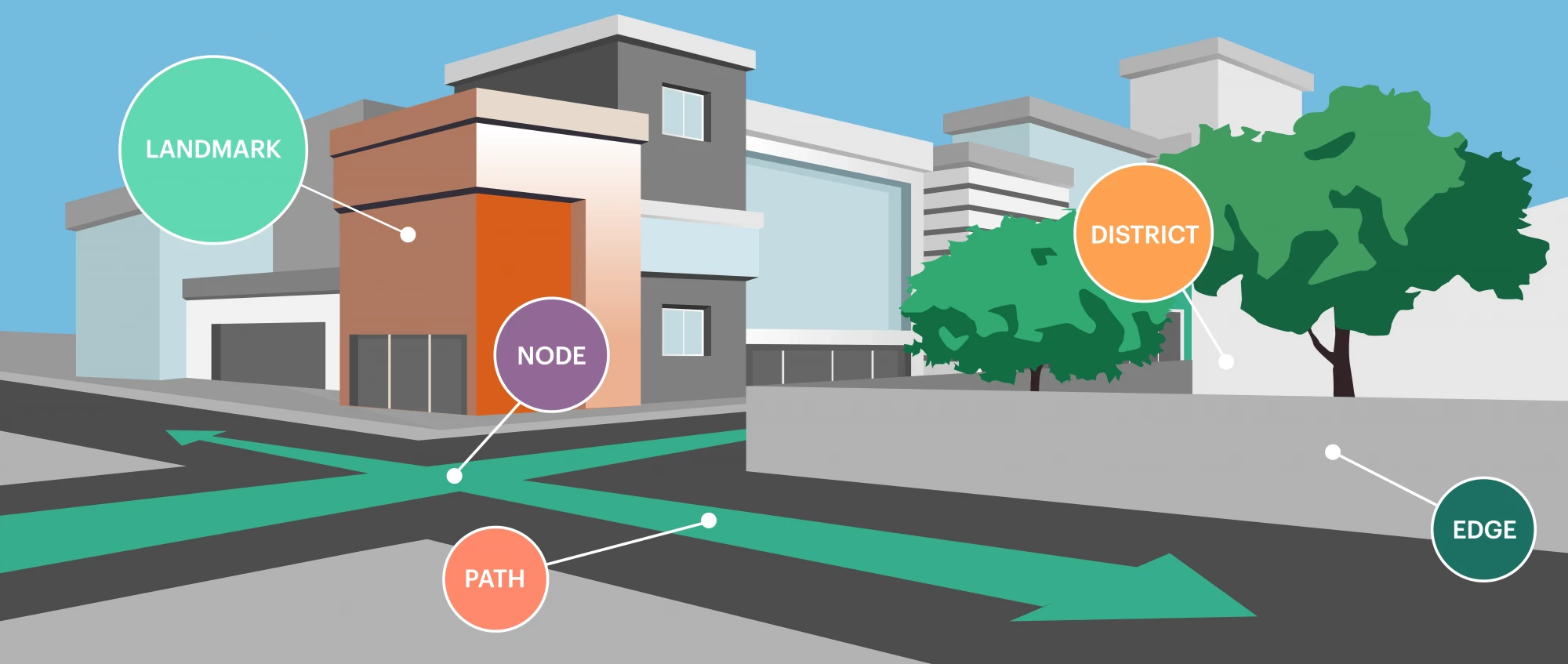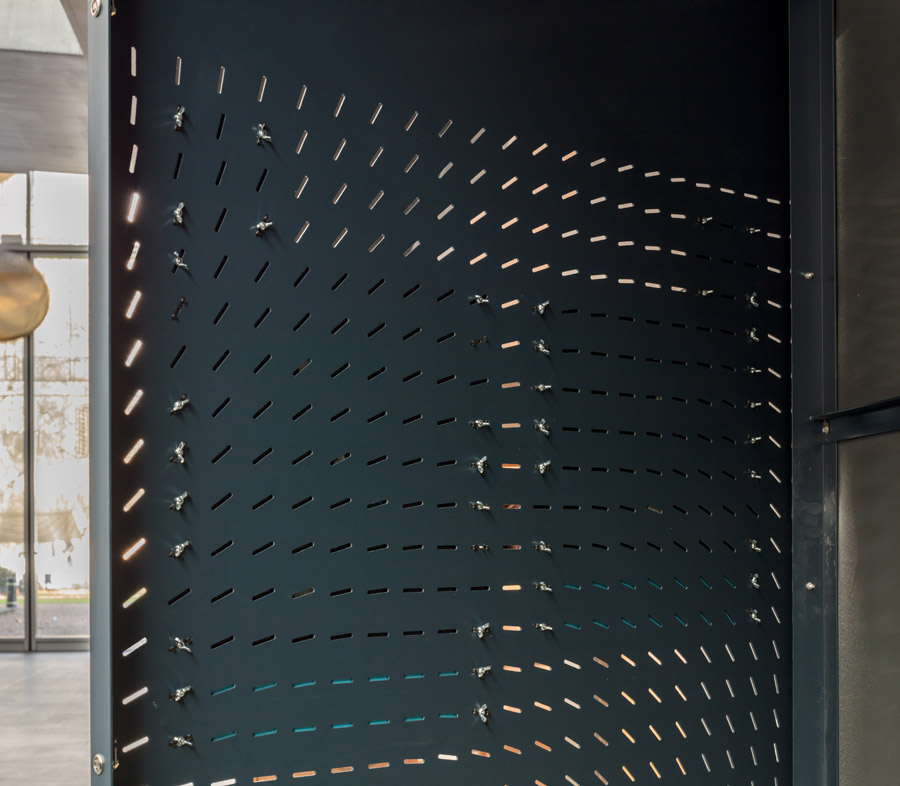Navigating the Future: Sustainable Wayfinding as a Catalyst for Change
In an era dominated by climate change concerns, businesses and industries must reassess their practices to align with sustainability goals. Wayfinding, often overlooked in this conversation, profoundly impacts our daily lives. From guiding us through bustling city streets to navigating complex spaces, efficient wayfinding is essential.
Implementing environmentally friendly practices, materials, and technologies within wayfinding systems can positively impact ecological preservation while also improving user satisfaction and community welfare. This blog outlines my top 7 recommendations that consider how the integration of sustainable materials, user-centred design principles, and innovative technological solutions contribute to the effectiveness and longevity of wayfinding systems.
Consider Sustainability from the Start:
Adopting a 'less is more' philosophy from the outset is crucial for sustainable wayfinding. Strive for efficiency in design, installation, and maintenance. Collaborate early with space planners and architects to ensure seamless integration, reducing overspending and minimising wasted resources. Prioritising sustainability at the planning stage sets the tone for a streamlined and eco-conscious wayfinding system.
Integrate Sustainable Processes, Materials, and Technologies:
Sustainable wayfinding begins with a holistic approach. From the inception of a project, prioritise the integration of reusable and eco-friendly materials. Consider technological solutions such as digital screens displaying maps that enhance efficiency and minimise environmental impact. Embracing sustainability at every level sets the foundation for a greener and more responsible wayfinding system.
Design for People:
Human-centred design is a pivotal aspect of sustainable wayfinding, contributing to engagement and longevity. According to Jennifer Fisher, human sustainability leader at Deloitte, businesses are expected to prioritise quality of life (Social) within Environmental, Social, and Governance (ESG) commitments. Incorporating universal design principles, encouraging community engagement, and promoting sustainable modes of transportation will not only enhance the user experience but contribute to the overall well-being of communities.
Intuitive Wayfinding and Environmental Cues:
The integration of intuitive wayfinding, leveraging architectural cues and the natural environment, reduces the reliance on physical signage. By seamlessly blending with the surroundings, signs become an organic part of the space, minimising the visual and environmental impact. This approach aligns with the sustainability ethos by optimising the use of existing elements. Typically this approach is good practice, but working in the Middle East recently has shown that our clients are embracing these methods to achieve Green Building Certification, such as Mostadam, putting sustainability at the forefront of their vision.

Longevity and Adaptability:
Sustainability extends beyond material choices; it involves creating systems that stand the test of time. Ensure that signs are durable and designed to withstand environmental changes. Plan for updates and changes by adopting modular designs and allowing for add-ons.
- Our award-winning project for the National Maritime Museum uses a pinboard-style fitting system that is easy to update by internal staff and allows for ongoing changes to exhibitions and events. This reduces waste and ensures the wayfinding system remains relevant even as new destinations emerge.

We have developed a bespoke set of sign materials, ‘Mima Top Trumps’, as a tangible tool to investigate the appropriateness of materials to suit the project at the concept design stages. Below are a few examples of some of our favourites right now:

Smile Plastics, a company specialising in the design and manufacturing of surface panels crafted from recycled plastic, has come to our attention for its innovative approach to sustainable materials. The company assembles materials prior to pressing, providing both standard and custom panels tailored to specific colour and pattern preferences for commercial use.
The incorporation of waste into the material underscores Smile Plastics' commitment to telling a powerful story through design. The resulting panels are not only 100% recycled but also 100% recyclable, available in various thicknesses to ensure durability, waterproofing, and moderate UV resistance.
Embracing a zero-waste production model, Smile Plastics ensures that all off-cuts or end-of-life products can be recycled or resold, contributing to the establishment of a fully closed-loop system. Notably, the company has implemented a buyback scheme for materials at the end of its life cycle, further reinforcing its dedication to sustainability.
Honext, an innovative fibreboard alternative, is made from upcycled fibre waste from the paper industry. Certified Circular by design, these boards are free from resins and added VOCs, making them fully recyclable and reducing waste after use.
The HONEXT® Process is carbon-negative, with manufacturing taking place on a landfill site. This ensures zero-mile travel for raw materials, and the facility is entirely powered by natural gases.
With a 25-year lifespan, a Class B-s1,d0 fire rating, and no toxic additives, Honext is a safe and healthy choice for indoor applications. It offers sound absorbency, breathability, and regulation of air humidity.
Efficient Lighting Solutions:
Illuminated signs play a crucial role in wayfinding, and their sustainability is achievable through ultra-efficient LEDs. These not only minimise electricity consumption but also offer longevity and reduced environmental impact. Leveraging solar panels further enhances sustainability, allowing signs to operate independently from the main power supply.
Social Impact and Positive Outcomes:
Beyond environmental benefits, sustainable wayfinding fosters social cohesion and inclusivity. By prioritising human-centred design, the system becomes more accessible to diverse communities, contributing to a sense of belonging. Community engagement initiatives, such as involving local artists in wayfinding projects, not only enhance aesthetics but also strengthen community ties. Moreover, promoting sustainable transportation modes like walking and cycling not only encourages healthier lifestyles but, when coupled with accessibility testing based on lived experiences, can significantly prolong the lifespan of wayfinding systems, positively impacting the well-being of individuals and the community at large.
As we navigate an increasingly complex and environmentally conscious world, sustainable wayfinding emerges as a beacon of responsible design, echoing a commitment to shaping not only our physical environments but also the way we connect with and contribute to our communities. By seamlessly integrating sustainable processes, materials, and technologies into wayfinding systems, we embark on a transformative journey towards a greener, more sustainable future. Beyond the immediate contributions to environmental conservation, this approach resonates with a broader societal impact. It is a collective step towards fostering inclusive, accessible spaces that promote community well-being, encourage social interactions, and contribute to a more resilient and interconnected society. The time for sustainable wayfinding is now—an investment in a future where design goes beyond aesthetics, becoming a catalyst for positive change and lasting community benefits.